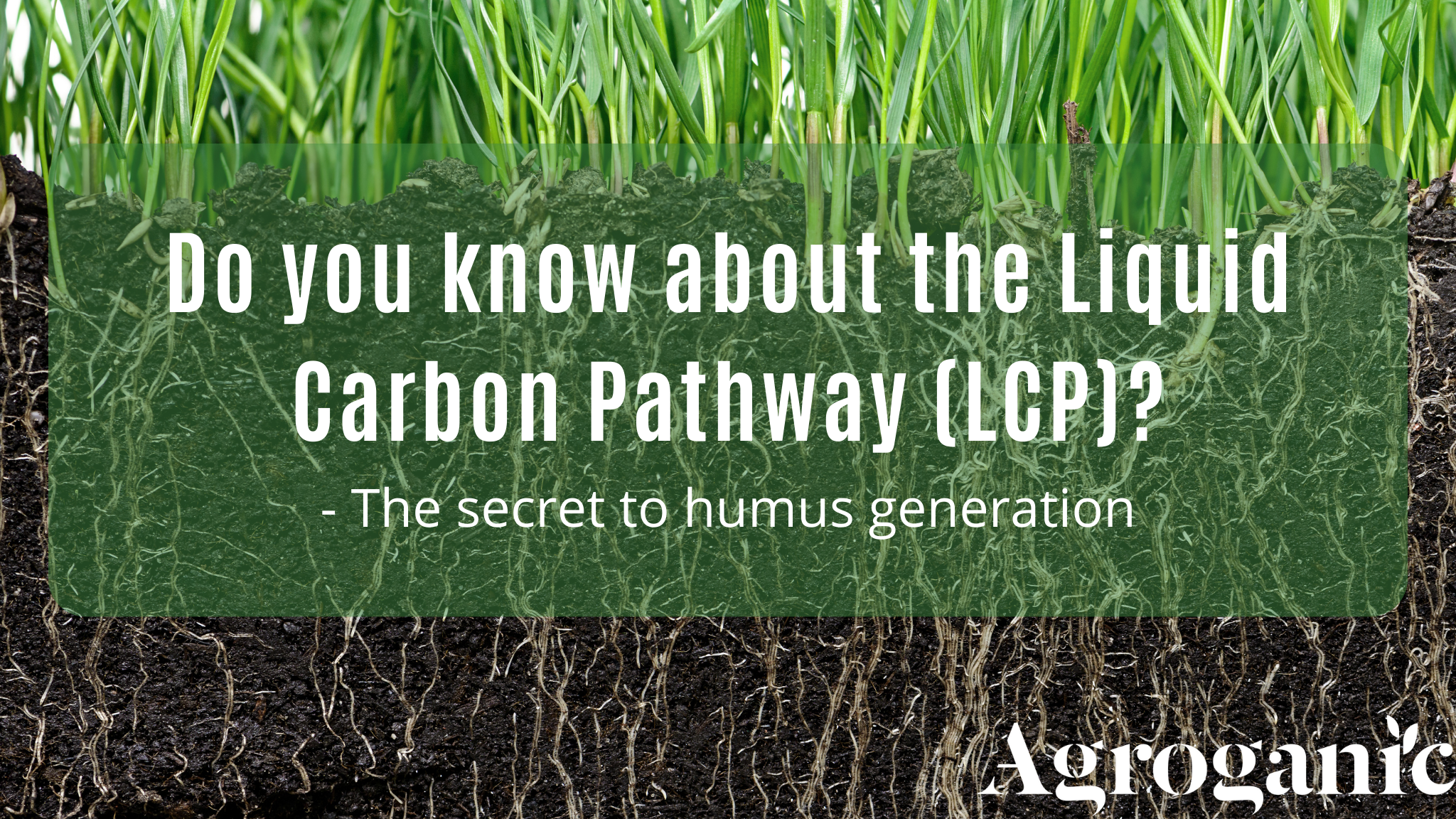How to build up humus in your soil with the Liquid Carbon Pathway
What is the Liquid Carbon Pathway?
The Liquid Carbon Pathway (LCP) is the process where plants turn CO2 from the atmosphere into soil carbon. The plants use some of the CO2 they take up to exude simple sugars through their roots to feed mycorrhizal fungi. By forming symbiosis with mycorrhizal fungi, the fungi help the plants access water and nutrients in exchange for carbon from their host. These root exudates are then turned into stable humus molecules by soil microorganisms. Keeping this process in mind can be an efficient way to increase the humus content in your soil.
Why is humus important?
Increasing the humus content in your soil is beneficial for several reasons like improved soil structure, better water-holding capacity, and increased nutrient availability, which all give more resilient crops.
The Liquid Carbon Pathway is the quick way to build humus in the soil. In agricultural systems, the way we usually work with increasing carbon content is by incorporating dead organic matter into the soil, which is known as the decomposition pathway (DP). It has been estimated that the LCP builds soil carbon 5-30 times faster than carbon derived from aboveground biomass decomposition so if we as farmers want to increase the carbon content of our soils, it is worth considering how we can increase the LCP.
The LCP and the DP function in fundamentally different ways and these differences are worth considering due to their impact on soil health and carbon sequestration.
The differences between LCP and DP
The DP is an aerobic process that decomposes organic matter, which releases CO2. This pathway adds carbon-rich mulch to the soil, but since decomposition is an active process, this carbon won’t stay in the soil but rather slowly disappear over time.
The LCP however, is a low oxygen process where the microbial life in the soil turns the root exudates into humus, which are very stable compounds that can stay in the soil for many years.
Both processes form new topsoil but in quite different ways. The DP adds soil carbon through the decomposition of dead organic material at the soil surface, which results in carbon being added only to the very top of the soil.
The LCP requires photosynthesis which is what makes the exudation of sugars from the plant roots possible. These sugars then undergo humification where the simple sugar exudates are joined together into the more complex and stable humus molecules. The humification is a four step process that requires an array of microorganisms including mycorrhizal fungi, nitrogen fixing bacteria, and phosphorus solubilising bacteria, all of which need their energy from the plant root exudates to exist. This process forms topsoil in much greater depth than through the DP.
LCP in agricultural ecosystems
The LCP is limited, if not absent, in agricultural soils due to currently prevalent farming practices. When the soil is disturbed by plowing and tilling, the mycorrhizal fungi are destroyed, which means that the plant-fungi symbiosis can’t form.
Additionally, most agricultural soils are still left bare for large periods of the year, but in order for the LCP to occur, there must be living, green plants growing in the soil. Mycorrhizal fungi get their energy as the simple sugars in liquid form from actively growing plants. This means that if there are no living plants growing in the soil, the LCP cannot occur, and no humus is formed.
The key to farming with the Liquid Carbon Pathway
If you want to get the benefits from the Liquid Carbon Pathway, these two things are what you need to focus on.
1) As little soil disturbance as possible. No-till practices allow for the mycorrhizal fungi to form hyphae in the soil so the symbiosis can happen. When the hyphae are left intact, the symbiosis can be established, and the LCP will be encouraged.
2) Make sure to incorporate cover crops in your rotation. Growing green plants in the soil year round by using cover crops (or living mulch, intercropping, etc) allows for photosynthesis to occur which fuels the LCP, generating humus.
Embracing these two strategies in your farming system will allow you to get the benefits from the Liquid Carbon Pathway and increase the humus content in your soil.
 [gtranslate]
[gtranslate]

